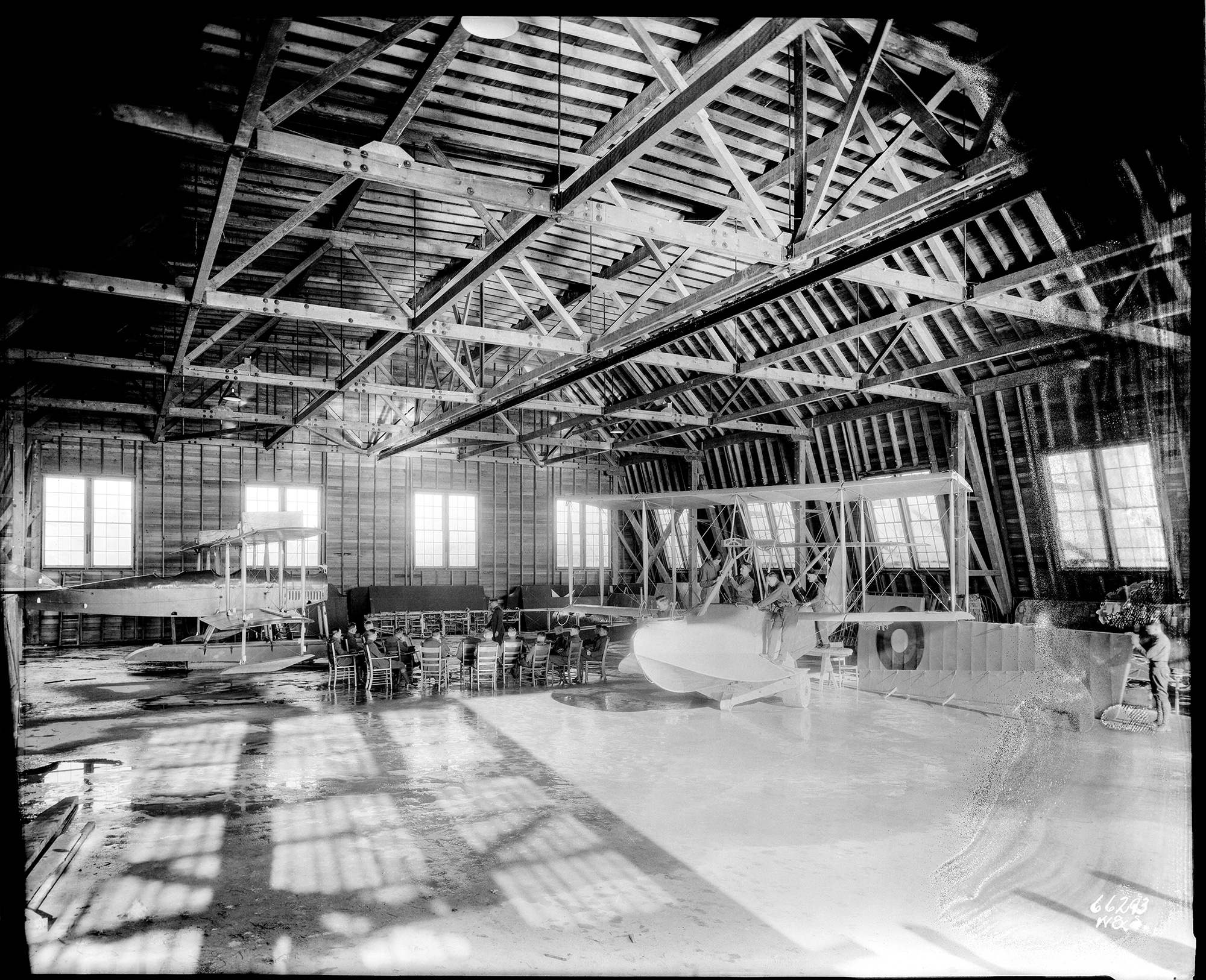
A cathedral and a landmark A cathedral and a landmark A cathedral and a landmark
The ASUW Shell House’s historic status will aid efforts to restore it.
By Hannelore Sudermann | March 2023
It has been described as rickety. And some have called it a cathedral. Either way, more than a century after the last nail was pounded in, the ASUW Shell House, also known as the Canoe House, also known as the U.S. Naval Training Hangar, has become an official Seattle landmark.
The recognition took place in 2018 to subtle fanfare at a hearing of the Seattle Landmarks Preservation Board. The board determined that the structure—designed by the Navy during World War I and used for several decades as headquarters for the UW rowing teams—met multiple criteria for landmark status.
Susan Boyle, ’75, ’79, an architectural historian, made the case on behalf of the UW. No stranger to the University, where she earned both her bachelor’s and master’s degrees, the alumna crafted a thorough report nominating the structure and noting how the campus has grown around it.
“It’s such an amazing place,” she says of the UW in Seattle. She points to the formal north campus where London plane trees line Memorial Drive as it rolls down between French Renaissance-style buildings. “Throughout campus there are just incredible gifts from prior generations of planners, designers and campus leaders,” she says. But the shell house was a humbler endeavor, she adds.
“It’s like you are in the bones of the whale just looking up at it. It’s really a treat.”
Susan Boyle, architectural historian
For thousands of years, the site was a crossing-over spot where Indigenous people carried their canoes between what are now known as Lake Washington and Lake Union. And then military and aeronautic history “give the building another level of importance,” Boyle says. Built for the seaplanes of the time, it is a rare example of its style of architecture. The trusses and many small pieces of wood form a gaping enclosed space, says Boyle. “It’s like you are in the bones of the whale just looking up at it. It’s really a treat.”
But most people associate the building with rowing since it served as home to the men’s and women’s crews for several decades, says Boyle. That includes the famous Husky team that won gold in the 1936 Olympics in Berlin—the focus of the New York Times bestseller, “The Boys in the Boat,” and of an upcoming feature film directed by George Clooney.
On a recent visit to the shell house, Eric Cohen, ’82, pointed out the afternoon sunlight streaming through the windows. “You don’t see light like this anywhere today,” he says. A former UW coxswain, Cohen now serves as team historian. The shell house is often in his research because of the generations of UW rowers who used it. In the late 1920s, a mezzanine was added to make a workshop where boat-building genius George Pocock crafted racing shells.
When the crew moved to the Conibear Shellhouse in 1949, the old hangar was turned into a home for the sailing team and a site where people could rent canoes. Around that time, the structure was described in the Seattle Post-Intelligencer as “the rickety UW boathouse.”
At different points, it was nearly forgotten by the University, says Cohen. “But they never really got around to tearing it down.”
Though the shell house was nominated to the National Register of Historic Places in 1975, students like Cohen and his teammates didn’t know about their historical connection to the building. “But today it has a national presence,” he says.
While landmark status may affect what changes the University can make to the structure, it also may help with efforts to restore it. A campaign is underway to raise $18.5 million to preserve and update the structure as a student space for lectures and gatherings, a cultural center and a venue for meetings, conferences and special events.
Boyle has no doubt it will someday welcome thousands of visitors: “The building has many, many fans.”
To learn more, visit ASUW Shell House.